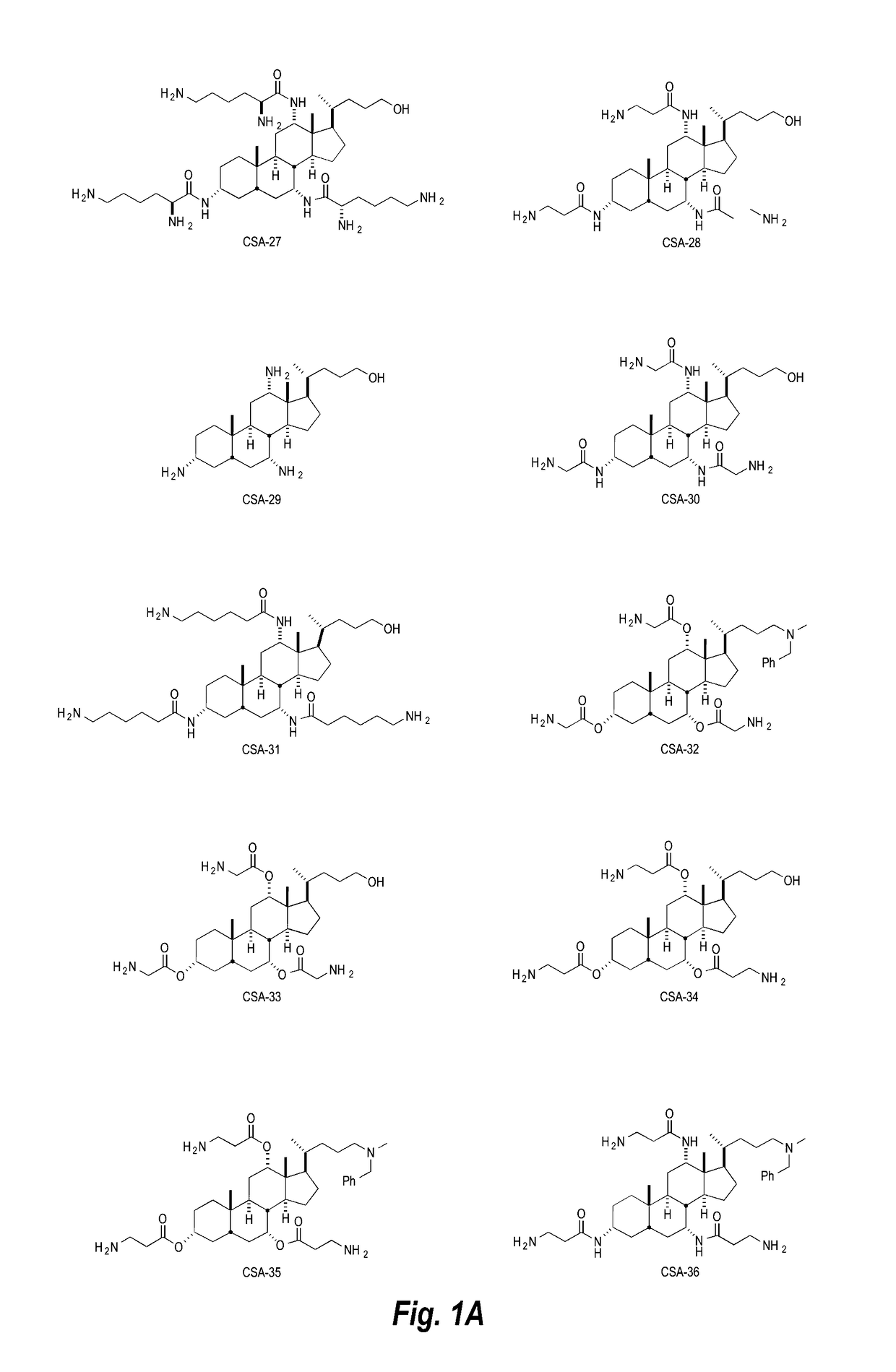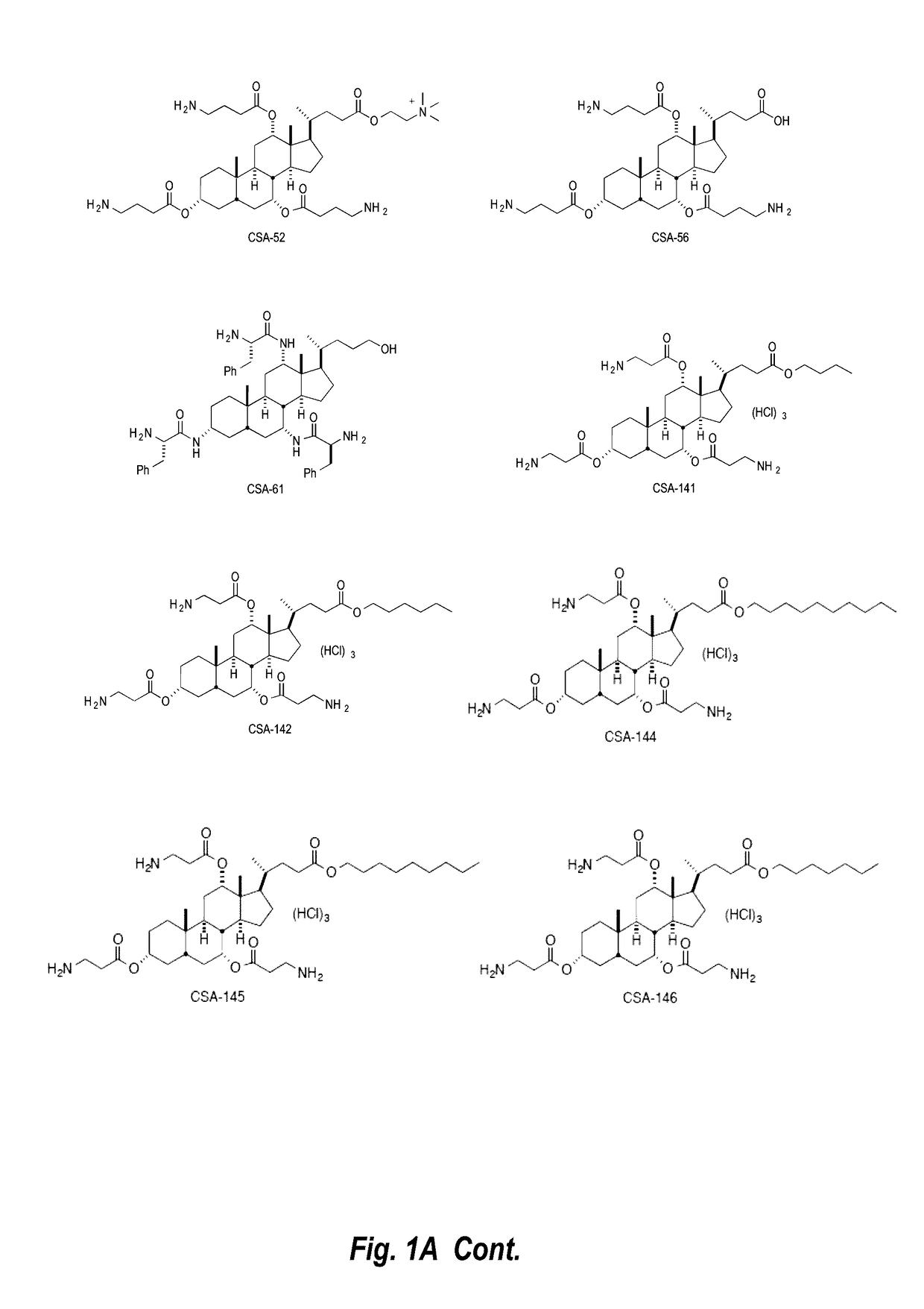Novel endotracheal tube for the reduction of intubation-related complication in neonates and babies
a technology of tracheal tube and endotracheal tube, which is applied in the field of medical devices, can solve the problems of medical implants being subject to microbial contamination, medical devices are typically unfit for any further use, and add to medical care costs, so as to reduce infection risk, reduce infection-related inflammation, and reduce the fouling of implants
- Summary
- Abstract
- Description
- Claims
- Application Information
AI Technical Summary
Benefits of technology
Problems solved by technology
Method used
Image
Examples
example 1
[0066]To determine the role of synthetic Ceragenins CSA-13, 44 and 90 in inflammation using mesenchymal stem cells (MSC), targeted mRNA panels from SABiosciences, and primary cells from Lonza were selected. Cells were purchased from Lonza.com and used fresh for each test using recommended media and culture conditions. After treatment, mRNA was isolated using Qiagen RNeasy Mini Kit®, and quantified using a NanoDrop 2000® by UV at 260 nm and 260 / 280 ratio for purity. cDNA was made using a First Strand Kit® from SABiosciences and processed for real time PCR using a kit from the same company for selected analysis of wound healing pathways. Results from q-PCR were uploaded to the SABiosciences site and to Ingenuity.com web site for analysis and pathway mapping. On day 1, primary human MSC cells were plated at 200,000 cells / well using 6-well plates with 3 ml of recommended mediah—MSC Basal Medium+BulletKit (50 ml Growth Supplement, 10 ml L-Glutamine and 0.5 ml Gentamicin Sulfate Amphoterc...
example 2
[0067]IL-6 is a marker of systemic inflammation. Female C57 / BL6 mice were infected in the respiratory tract with a non-lethal dose of P. aeruginosa as a model of pneumonia. One cohort (n=6) also received 80 mg / kg CSA-13; a second cohort (n=6) also received 40 mg / kg CSA-13; a third (n=6) received no CSA treatment; and a fourth (n=6) was not infected. Examination of IL-6 levels in the kidneys 24 hours post-infection demonstrated that those infected animals not treated with CSA had IL-6 levels>15 times those of control and 5-10 times higher than those of the CSA-treated animals. Thus, treatment with CSA significantly reduced kidney IL-6 levels in a pneumonia model.
example 3
[0068]A silicone-based Foley catheter was coated with a hydrogel coating of approximately 10 μm in thickness. The coating included CSA-131. The coating was initially shown to maintain efficacy for about 6 or 7 days.
PUM
| Property | Measurement | Unit |
|---|---|---|
| Antimicrobial properties | aaaaa | aaaaa |
| Polymeric | aaaaa | aaaaa |
| Friction | aaaaa | aaaaa |
Abstract
Description
Claims
Application Information
 Login to View More
Login to View More - R&D
- Intellectual Property
- Life Sciences
- Materials
- Tech Scout
- Unparalleled Data Quality
- Higher Quality Content
- 60% Fewer Hallucinations
Browse by: Latest US Patents, China's latest patents, Technical Efficacy Thesaurus, Application Domain, Technology Topic, Popular Technical Reports.
© 2025 PatSnap. All rights reserved.Legal|Privacy policy|Modern Slavery Act Transparency Statement|Sitemap|About US| Contact US: help@patsnap.com



